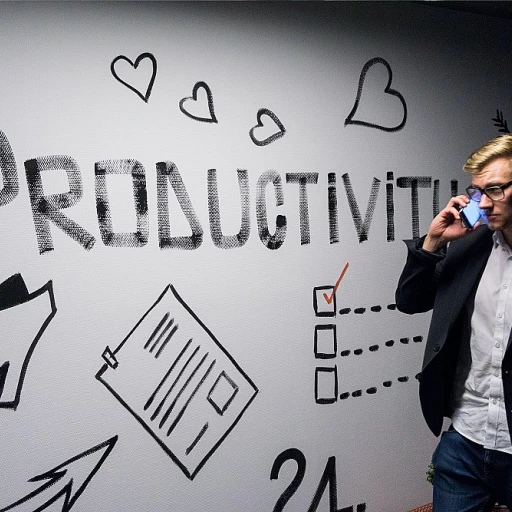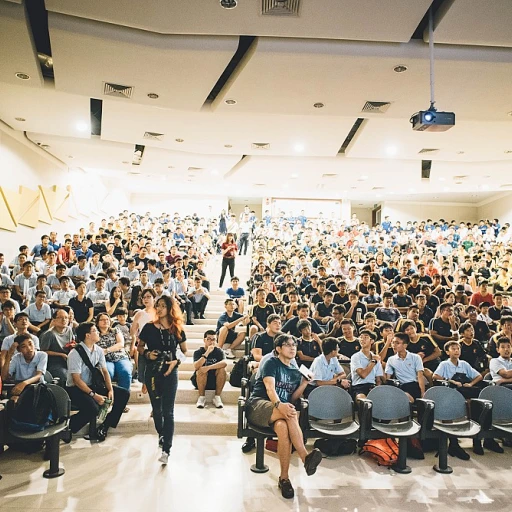
Understanding the Need for Continuous Learning
The Evolving Landscape of Workforce Development
In today's rapidly changing environment, continuous learning has become a strategic priority for any organization aiming to thrive. The modern workforce requires a dynamic strategy to not only address immediate skills gaps but also anticipate future needs that may emerge as industries evolve. Therefore, understanding the need for continuous learning is paramount in crafting an effective workforce development strategy.
The foundation of this strategy lies in a detailed analysis of the current workforce and planning processes that align with both local and regional employment trends. By identifying these factors, organizations are better positioned to create development plans that are both comprehensive and adaptable.
- Public and private sectors alike need to develop a workforce plan that incorporates continuous learning as a core component. This involves the coordination of training programs and planning resources tailored to the needs of different departments.
- Development plans should be shaped by technical assistance and insights from data-driven approaches, allowing for more accurate workforce planning and local workforce development.
- Organizations must plan local strategies that consider regional demands and public health challenges, thus ensuring that plans workforce are relevant and impactful.
The journey towards continuous learning is intricate yet rewarding. For those seeking to understand the broader implications on career advancement, insights can be found on navigating the essential path of career growth.
Continuous learning is not merely about filling skills gaps but is also about unlocking new opportunities for both employees and employers. Innovative development strategies aim to reinforce public health efforts, adapt to technological advancements, and enhance overall employee satisfaction and retention.
Identifying Skills Gaps
Pinpointing Skill Shortfalls
To craft an effective workforce development strategy, it is critical to identify the specific skills lacking within your organization. Recognizing these gaps is the first step toward an actionable development plan that addresses both immediate and future needs. In doing so, the organization can allocate resources effectively, targeting the areas that will provide the greatest impact on workforce competency and productivity. First, conduct a thorough skills analysis among employees. This should involve reviewing current job requirements against the existing capabilities of your local workforce. By doing so, decision makers can pinpoint precisely which areas lack proficiency and require enhancement. A comprehensive assessment might include:- Employee surveys soliciting self-reported skill levels and areas where training might be beneficial.
- Interviews with department heads to determine critical skill shortages affecting departmental performance.
- Performance data analysis to identify trends indicating potential training opportunities.
Creating a Tailored Learning Program
Designing Customized Training Solutions
Creating a tailored learning program is a pivotal component in any effective workforce development strategy. It plays a crucial role in bridging the skills gap identified in the analysis phase and ensuring employees are well-equipped to meet strategic priorities. A well-defined program aligns employee development with the broader goals of the organization, maximizing both individual and collective growth.
To build a successful training plan, start by conducting a comprehensive needs assessment. This involves collaborating with various departments to identify specific training requirements essential for local workforce success. Programs should be developed to address those gaps, allowing workers to gain opportunities for upskilling or reskilling. Engaging with regional industry leaders, local public health organizations, and even public-private partnerships can offer valuable insights into the skills that are most in demand.
- Leverage existing planning resources to build a flexible and adaptive training framework. This framework should accommodate diverse learning styles and incorporate a range of instructional methods.
- Develop a roadmap for employee development that includes both short-term and long-term goals. This roadmap will help employees track progress and stay motivated.
- Include a mix of technical assistance, mentorship, and online learning platforms to ensure comprehensive development plans. An integrated approach will cater to various learning preferences and enhance program effectiveness.
Integrating technology-driven solutions in the planning process is key. For instance, competency-based training programs provide a scalable method that mirrors real-world applications, allowing employees to apply their learning directly to job-related challenges. For more on the practical implementation of such training, explore our detailed guide on real-world applications of competency-based training.
Ultimately, a tailored learning program not only fills skills gaps but also fosters a culture of continuous improvement, where every member of the organization contributes towards the advancement of public, local, and health workforce objectives. Such a cohesive strategy ensures your workforce stays competitive and resilient in an ever-evolving landscape.
Leveraging Technology in Learning
Embracing Technology for Workforce Development
In today's rapidly evolving landscape, leveraging technology in learning is not just an option but a necessity. As organizations strive to craft an effective workforce development strategy, integrating technology into training programs can significantly enhance the learning experience and outcomes.
Technology offers a plethora of opportunities to fill skills gaps identified in your workforce analysis. By incorporating digital tools, you can create a more dynamic and interactive learning environment that caters to the diverse needs of your employees. This approach not only supports the development of technical skills but also fosters a culture of continuous learning.
Key Benefits of Technology in Learning
- Accessibility: Online platforms make training resources available to employees regardless of their location, supporting both local and regional workforce development plans.
- Flexibility: E-learning modules allow workers to learn at their own pace, accommodating different learning styles and schedules.
- Cost-Effectiveness: Digital training programs can reduce the costs associated with traditional classroom-based training, making it easier for public health departments and other organizations to implement comprehensive development plans.
- Data-Driven Insights: Technology enables the collection and analysis of data on employee progress and engagement, helping to measure the impact of learning initiatives effectively.
By integrating technology into your workforce planning process, you can ensure that your development strategy is both effective and sustainable. This approach not only helps to address immediate skills gaps but also prepares your workforce for future challenges, aligning with your strategic priorities.
Measuring the Impact of Learning Initiatives
Evaluating Learning Investments
Measuring the efficacy of training programs and development plans is an integral part of an effective workforce strategy. Through such analysis, organizations can ensure their efforts align with their strategic priorities. It's not merely about executing a plan; it's about knowing whether the plan helps bridge skills gaps and enhances the overall capabilities of your workforce. Incorporating structured assessments into your workforce development initiatives allows organizations to gather insights into employee progress. Performance metrics, feedback, and evaluation tools can significantly aid in identifying whether the training programs are matching the intended goals. This feedback loop isn’t just about numbers; it’s about real-world applications and how effectively workers integrate new skills. Moreover, leveraging analytics to evaluate the impact of training on workforce performance is essential. Workforce planning resources can help track improvements across various departments, offering a clearer picture of how the development plans bolster both local and regional demands. Ways to Measure Impact:- Surveys and Feedback Mechanisms: Regular feedback from employees will help in understanding what is working and what isn’t in your training initiatives.
- Performance Metrics: Monitoring improvements in performance metrics is crucial for quantifying the improvement and filling skills gaps.
- ROI Analysis: This involves comparing the resources invested in training to the improvements seen in productivity and efficiency among workers.
- Qualitative Reviews: Observations and interviews can provide profound insights into how well the training programs equip workers to meet strategic priorities.
Fostering a Culture of Learning
Building a Learning-Oriented Environment
Creating a culture of continuous learning within an organization is crucial for effective workforce development. This culture not only supports the strategic priorities of the organization but also empowers employees to fill skills gaps identified in the workforce analysis. A learning-oriented environment encourages employees to engage in training programs and take advantage of development opportunities.
Encouraging Employee Participation
To foster a culture of learning, it's essential to encourage participation from all levels of the workforce. Employees should feel motivated to pursue training that aligns with both their personal career goals and the organization's development strategy. Providing access to local and regional training resources can help employees enhance their skills and contribute more effectively to the workforce plan.
Integrating Learning into Daily Operations
Integrating learning into the daily operations of the organization is another key aspect of fostering a learning culture. This can be achieved by incorporating learning objectives into the workforce planning process and ensuring that development plans are aligned with the overall strategy. Departments should collaborate to create a seamless learning experience that supports public health and other strategic goals.
Recognizing and Rewarding Learning Efforts
Recognition and rewards play a significant role in promoting a culture of learning. By acknowledging the efforts of employees who actively engage in continuous learning, organizations can reinforce the importance of development and encourage others to participate. This recognition can be part of the broader workforce development strategy, helping to maintain motivation and commitment among employees.
Providing Technical Assistance and Support
Finally, offering technical assistance and support is vital for sustaining a culture of learning. Employees should have access to the necessary tools and resources to pursue their learning goals. This support can come from various departments within the organization, ensuring that all workers have the opportunity to develop their skills and contribute to the effective workforce development plan.












